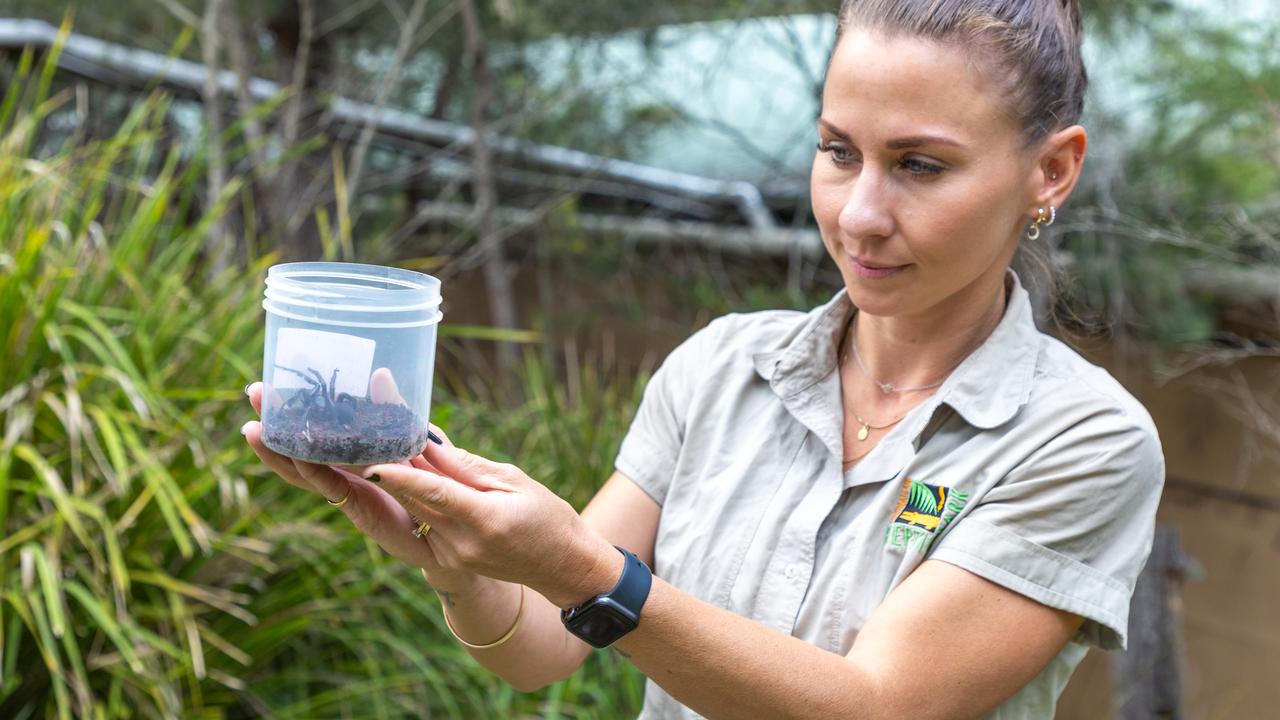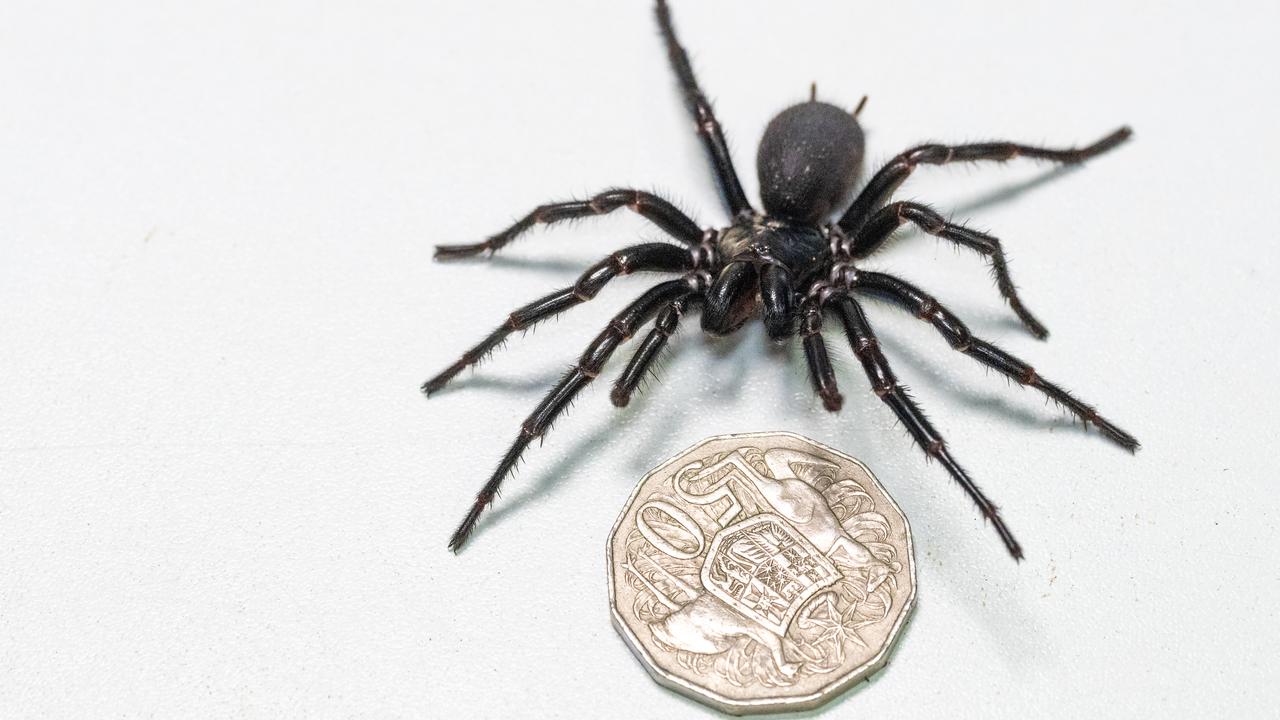Captured funnel-web breaks record as largest ever donated
A brave soul has captured and donated the largest recorded male funnel-web spider to a lifesaving antivenene program.
The Australian Reptile Park (ARP) has just received a record donation, but not in the form of cash.
The park, near Gosford on the NSW Central Coast, was on the receiving end of the biggest male funnel-web spider to ever be donated to its antivenene program and, appropriately, the 7.9cm nightmare fuel was named Hercules.
Some brave soul found Hercules at home, safely scooped him up, and delivered him to the ARP drop-off location at John Hunter Hospital in Newcastle.
Park spider keeper Emma Teni was excited to receive a specimen of Hercules’s size.

“We’re used to having pretty big funnel-web spiders donated to the park; however, receiving a male funnel-web this big is like hitting the jackpot,” she said.
“While female funnel-web spiders are venomous, males have proven to be more lethal.
“With having a male funnel-web this size in our collection, his venom output could be enormous, proving incredibly valuable for the park’s venom program.”
The sheer size of Hercules took Ms Teni by surprise, as females are generally the larger of the species.
“When I first saw Hercules I for sure thought he had to be a female because he was so big,” she said.
“Upon closer inspection, he is definitely a male and has some of the biggest fangs I have ever seen.”
That is a pleasant thought considering a funnel-web’s fangs can pierce through a human fingernail.
Ms Teni encourages the public to try to catch any funnel-web spiders they come across, if it’s safe to do so, as their contribution to the antivenene program is vital.

“People can bring any collected funnel-web spiders to the reptile park itself,” she said.
“However, if they can’t get to us, we have drop-off zones around Sydney, the Central Coast and Newcastle and all facilities are provided with a spider safety kit to house the spiders until the Australian Reptile Park staff can come and pick them up each week.”
The ARP relies on these donations for their antivenene program, which got under way in 1981. Since then, there hasn’t been a single fatality from a funnel-web bite.
According to The Australian Museum, there are between 30 to 40 recorded funnel-web bites every year, with the antivenene produced via these programs saving victims’ lives.
Ms Teni also has some advice on how to catch any funnel-webs the public may come across.
“Collecting a funnel-web is super simple,” she said.
“All you need is a jar and a spoon, then gently encourage the spider into the jar and place the lid back on, you then have them safely secured and ready to drop off.”
If you are lucky enough to come across and capture a funnel-web spider you can visit the Australian Reptile Park website to find a drop-off location.
Just make sure that lid is on properly.





